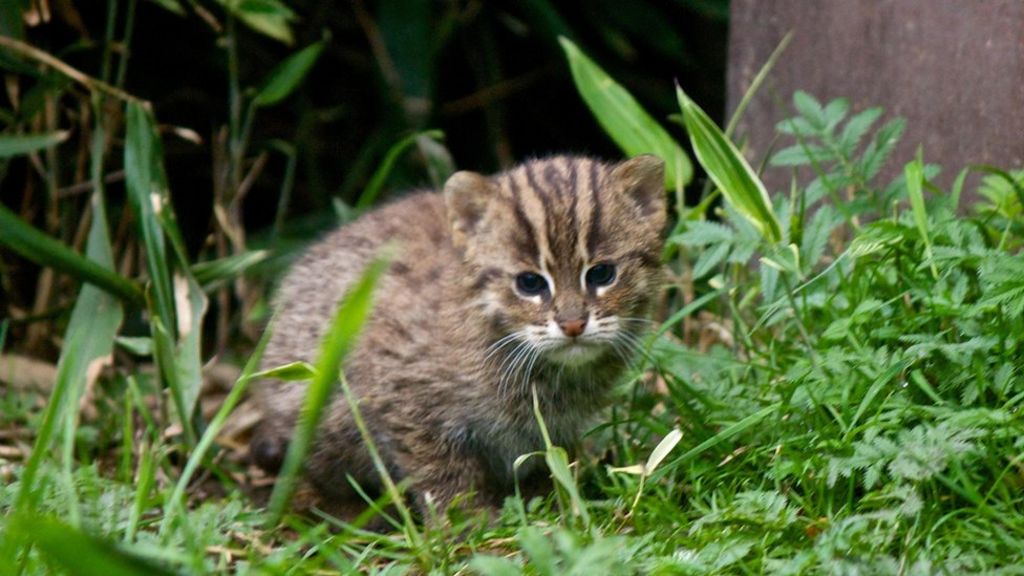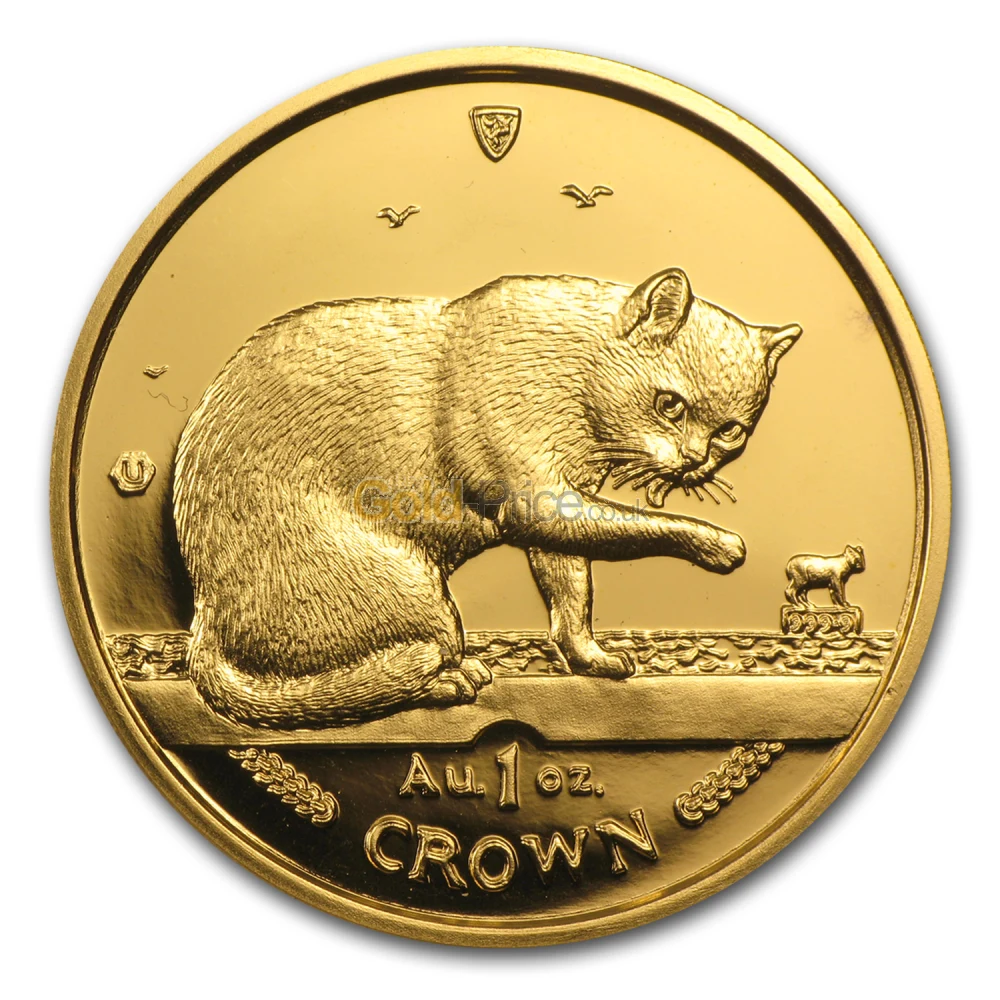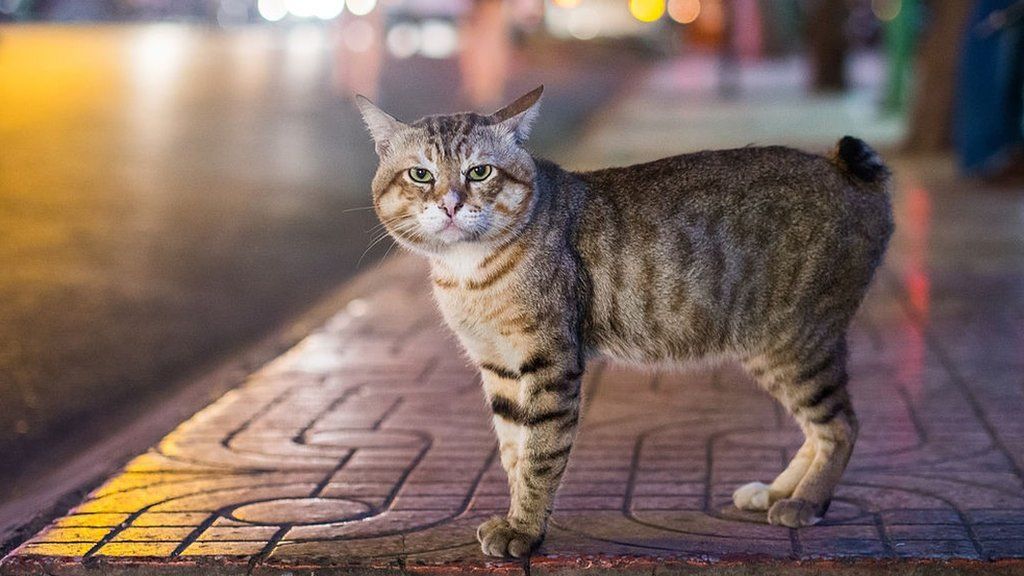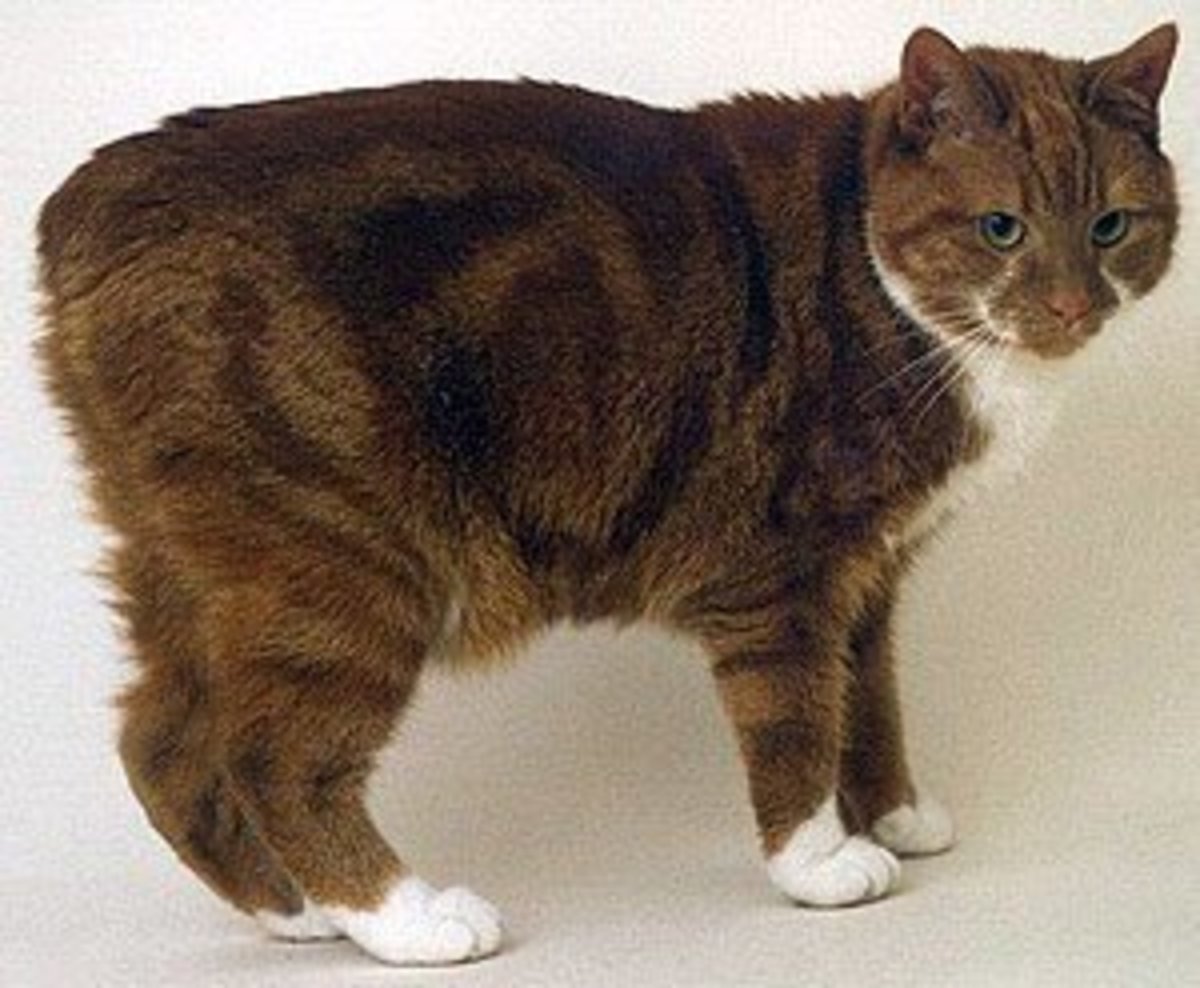
MANX CAT....a ancient breed originating on the Isle of Man in the Irish Sea....has a naturally
The Isle of Man has no indigenous cat species that could have formed the Manx. Like in many areas, this breed of cat originated thanks to people bringing cats to the island. Nobody knows who brought the cats to the island, though, and nobody knows what older breed of cat the Manx came from. One story tells that the Manx arrived on the island.

Rare fishing cat born at Isle of Man wildlife park BBC News
The Manx—whose origin story is told in many whimsical tales—is an ancient cat breed from the Isle of Man. Whether a traveler aboard Noah's Ark, as some stories suggest, or a descendant of mousers on Viking ships, Manx cats are renowned for their easygoing, playful, and cheerful nature, says Kelly Fishman, DVM, founder of Strut Animal Mobility Specialists and veterinary consultant for MYOS Pet.

The Manx cat is a breed of domestic cat originating on the Isle of Man in the British Isles
The Manx cat originated on the Isle of Man, located in the Irish Sea. There, members of the breed were originally referred to as "stubbin" cats, a term that some locals continue to use today. Like all domestic cats, the Manx is a descendent of the African wildcat (Felis lybica). The first domestic cats to arrive on the Isle of Man probably had.

White Wolf Rare fishing cat born at Isle of Man wildlife park (Video)
The Manx cat is a medium-sized domestic cat breed with a genetic defect that causes it to have little to no tail. Manx cats have a double coat of fur, large hind legs, and are also known as stumpies, stubbies, longies, and rumpies depending on the length of their tail, or lack thereof. The number of vertebrae normally found in a cat's tail is.

POBJOY MINTS ISLE OF MAN CAT SERIES HITS 28 YEARS OLD AgAuNEWS
Blue. Brown. Cream. Silver. Red. Kitten Prices. Average $600 - $1200 USD. On average, Common pedigree Manx kittens, from lesser-known breeding farms, cost from $500 to $800 USD. High-quality Manx cats, usually those that have no tail or a bone slight protruding where the tail usually is, will demand the most money, about $800 - $1,500 USD.

Manx Cat Isle of Man.
by isleofman.com 11th May 2022 Comments ( 0 ) Add to Favorites A "Rumpy" Manx Cat, Michelle Weigold, CC BY-SA 4.0 The Manx cat has a naturally occurring mutation of the spine which shortens the tail, resulting in a range of tail lengths from normal to tailless.
/portrait-of-manx-cat-on-field-720114087-5c45f80a46e0fb0001656dce.jpg)
Manx Cat — Full Profile, History, and Care
All our cats are pets first, they get constant attention and their health and happiness is the most important thing to us. All our cats are born in the Isle of Man, and when not in the Café are happy and free roaming, in our home and in the security of our large cat proofed garden. All our Manx cats are registered with the GCCF.

Max Cat Isle of Man postcard Isle Of Man, Max, History, Animals, Historia, Animales, Animaux
The cats swam all the way to the Isle of Man. They were finally safe and sound. The tailless cats settled contentedly on the Isle of Man. Manx Cat - Legend 3. The horrible Vikings were responsible for making the cats tailless. The Viking came. They killed innocent people. They plundered and stole the valuables of the island.

Isle of Man park in international cat breeding project BBC News
"Isle of Man resident Sara Goodwins, author of the book 'A De-tailed Account of Manx Cats,' notes that the first linguistic reference to tailless cats on the Isle of Man appears in the mid-18th Century." This spontaneous tailless genetic mutation occurred many centuries ago. According to one story, the Manx cat taillessness was a result of a.

Gold Coin price comparison Buy gold Isle of Man Cats
The Manx cat ( / ˈmæŋks /, in earlier times often spelled Manks) is a breed of domestic cat ( Felis catus) originating on the Isle of Man, with a mutation that shortens the tail.

Manx Cat 🐱 Isle of Man 🇮🇲 1080p60 YouTube
It has long back legs which are noticeably longer then the front legs. Covered in a dense double coat the cats can weigh on average 10 to 12 pounds for males and 8 to 10 pounds for females. A highly intelligent and affectionate breed often referred to as the "Dog Cat". The Manx breed is the result of spontaneous mutation, which occurred.

Why Manx cats have no tails? Anadolu Kedisi
The Isle of Man - Photo by Smergen from FreeImages. We now know why Manx cats sometimes have no tails, but the first linguistic reference to the tailless cats on the Isle of Man was in the mid-eighteenth century (2). The residents couldn't have known about genetic mutations. So they came up with their own ideas.

Longy Manx (Isle of Man) Cat pics, Cats, Cat lady
Manx, breed of tailless domestic cat of unknown origin but presumed by tradition to have come from the Isle of Man. Noted for being affectionate, loyal, and courageous, the Manx is distinguished both by its taillessness and by its characteristic hopping gait. It is compactly built, with a rounded head; large, round eyes; and small, wide-set ears.

The Isle Of Man Best Friend The Manx Cat
The Manx has been described as "rabbit-like" in his movements and general appearance. This cat breed often walks by moving both hind legs in unison, giving him a kind of bunny-hopping gait. Manx fur is thick and double-coated, making them healthy shedders, but also highly tolerant of colder weather and water.

Manx tailless cat genome project launched BBC News
7. Manx cats have a dog-like personality. These people-oriented kitties are gentle and affectionate. Many fans of the breed associate their playful demeanor with canine characteristics. The Manx cat is also highly intelligent. Similar to the Maine Coon, these cats enjoy the challenge of learning new tricks.

6 World's Weirdest Looking Cat Breeds HubPages
It is hard to say when the Manx cat was introduced to the Isle of Man. The first references of the Manx being tailless are documented in the early 18th Century. There is a theory that the Manx cat is related to the Norwegian Forest Cat which could suggest the breed came to the Island as early as 768 when the Norwegians raided the Isle of Man.